
Mumbai - The City of Dreams and Diverse Delights
Discover Mumbai, a city where dreams take flight and cultures blend seamlessly. From historic landmarks to Bollywood glamour, experience the vibrant pulse of India's metropolis.
Mumbai, often referred to as Bombay, is the financial, commercial, and entertainment capital of India. This bustling metropolis offers a unique blend of old-world charm and modernity. From the iconic Gateway of India to the lively streets of Colaba, every corner of Mumbai tells a story. The city is a melting pot of cultures, languages, and traditions, making it a vibrant place to explore. Visitors can marvel at the colonial-era architecture, such as the Chhatrapati Shivaji Maharaj Terminus and the majestic Prince of Wales Museum. Don't miss a stroll along Marine Drive, also known as the Queen's Necklace, which offers stunning views of the Arabian Sea. The city's diverse culinary scene is another highlight, with street food like Vada Pav and Bhel Puri offering a true taste of Mumbai. Mumbai is also the heart of Bollywood, India's thriving film industry. Take a tour of Film City or visit one of the many cinemas to catch a Bollywood movie. From shopping at the bustling markets like Crawford Market and Fashion Street to enjoying the nightlife at trendy bars and clubs, Mumbai has something for everyone. Whether you're a history buff, a foodie, or just looking to soak in the city's unique atmosphere, Mumbai is sure to leave a lasting impression.
Local tips in Mumbai
- Visit early in the morning or late afternoon to avoid the heat and crowds at popular tourist spots.
- Use the local trains for a fast and authentic travel experience, but avoid rush hours.
- Try street food from recommended stalls to enjoy the best and safest culinary delights.
- Carry cash for small purchases as not all places accept cards.
- Respect local customs and dress modestly, especially when visiting religious sites.
Neighbourhoods in Mumbai
Mumbai - The City of Dreams and Diverse Delights
Mumbai, often referred to as Bombay, is the financial, commercial, and entertainment capital of India. This bustling metropolis offers a unique blend of old-world charm and modernity. From the iconic Gateway of India to the lively streets of Colaba, every corner of Mumbai tells a story. The city is a melting pot of cultures, languages, and traditions, making it a vibrant place to explore. Visitors can marvel at the colonial-era architecture, such as the Chhatrapati Shivaji Maharaj Terminus and the majestic Prince of Wales Museum. Don't miss a stroll along Marine Drive, also known as the Queen's Necklace, which offers stunning views of the Arabian Sea. The city's diverse culinary scene is another highlight, with street food like Vada Pav and Bhel Puri offering a true taste of Mumbai. Mumbai is also the heart of Bollywood, India's thriving film industry. Take a tour of Film City or visit one of the many cinemas to catch a Bollywood movie. From shopping at the bustling markets like Crawford Market and Fashion Street to enjoying the nightlife at trendy bars and clubs, Mumbai has something for everyone. Whether you're a history buff, a foodie, or just looking to soak in the city's unique atmosphere, Mumbai is sure to leave a lasting impression.
When is the best time to go to Mumbai?
Iconic landmarks you can’t miss
Gateway Of India Mumbai
Explore the iconic Gateway of India, a historical landmark that captures the essence of Mumbai's rich heritage and stunning coastal views.

Chhatrapati Shivaji Maharaj Terminus
Explore the architectural brilliance and historical significance of Chhatrapati Shivaji Maharaj Terminus, a UNESCO World Heritage Site in Mumbai.
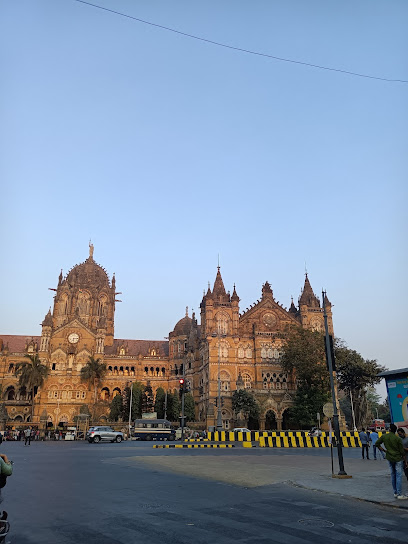
Band Stand
Discover the enchanting beauty of Band Stand in Bandra West, Mumbai, where scenic views meet local culture and vibrant sunsets.
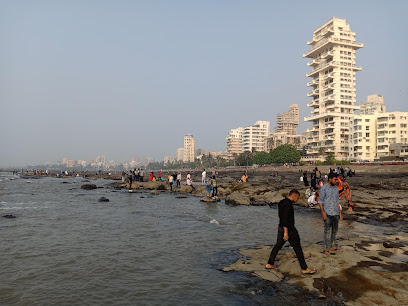
Chhatrapati Shivaji Maharaj Vastu Sangrahalaya
Explore the rich heritage of India at Chhatrapati Shivaji Maharaj Vastu Sangrahalaya, a captivating history museum in Mumbai's Kala Ghoda district.

The Taj Mahal Palace, Mumbai
Experience unparalleled luxury and rich heritage at The Taj Mahal Palace, Mumbai's iconic hotel overlooking the Arabian Sea.
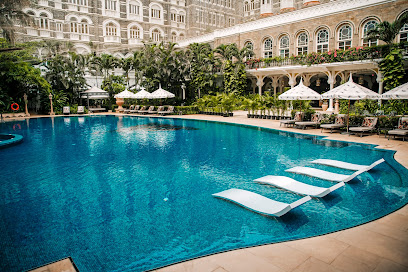
Elephanta Caves
Explore the Elephanta Caves: Ancient rock-cut temples and sculptures dedicated to Shiva, a UNESCO World Heritage site near Mumbai.
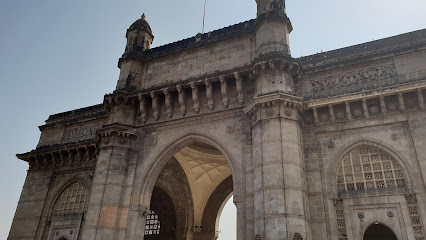
Bandra Fort
Explore Bandra Fort, a historical fortress in Mumbai with stunning views of the Arabian Sea and a rich cultural atmosphere ideal for tourists.
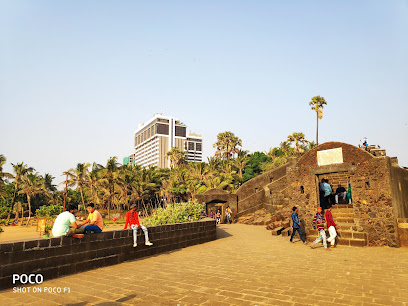
Flora Fountain
Explore the charm of Flora Fountain, a historical landmark in Mumbai, where culture and history converge in the heart of the city.
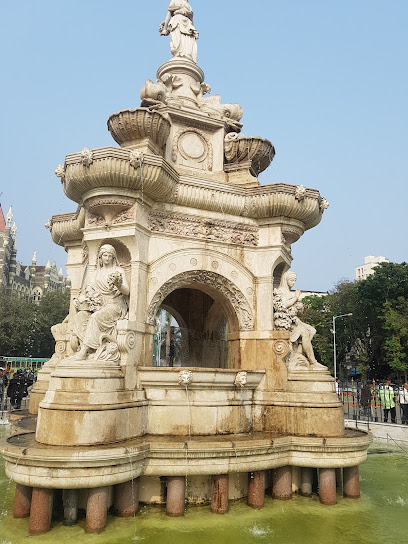
Haji Ali Dargah
Explore the spiritual heart of Mumbai at Haji Ali Dargah, a stunning shrine that blends culture, architecture, and breathtaking sea views.
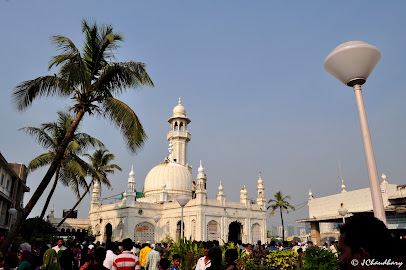
Chhatrapati Shivaji Maharaj Statue
Discover the majestic Chhatrapati Shivaji Maharaj Statue, a historical landmark in Mumbai celebrating the legacy of India's great warrior king amidst vibrant surroundings.
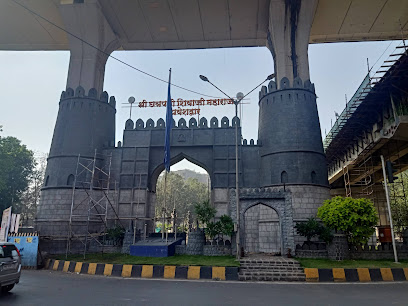
Kanheri Caves
Discover the ancient rock-cut Kanheri Caves in Mumbai's Sanjay Gandhi National Park, a UNESCO World Heritage site showcasing India's rich Buddhist heritage.
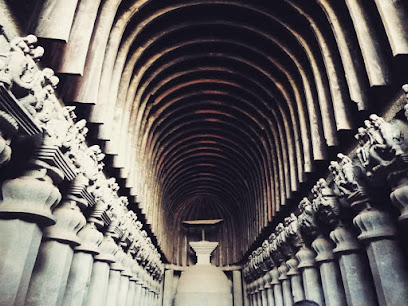
Worli Fort
Discover the historical charm and breathtaking views of Worli Fort, a coastal gem in Mumbai that reflects the city's rich maritime heritage.
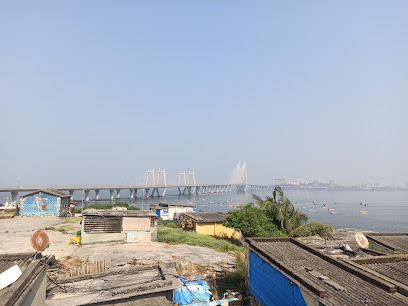
Shiv Fort
Explore the historic Shiv Fort in Mumbai, a majestic backdrop of architectural beauty and panoramic views that narrates tales of India's rich heritage.
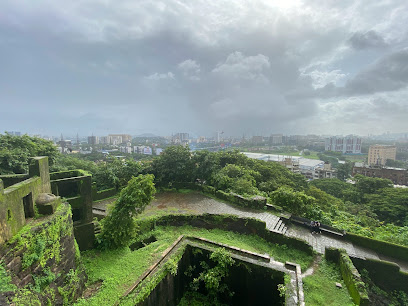
Jogeshwari Caves
Discover the ancient Jogeshwari Caves: a hidden gem of Mumbai showcasing rich history and spiritual heritage amidst serene rock-cut architecture.
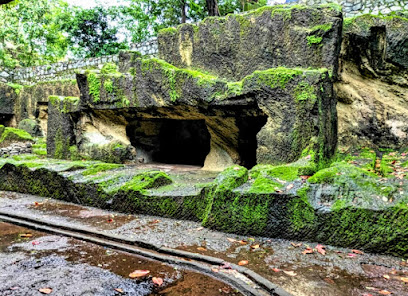
Madh Fort
Explore Madh Fort - A Historic Fortress Offering Stunning Views and Rich Maritime Heritage in Mumbai.
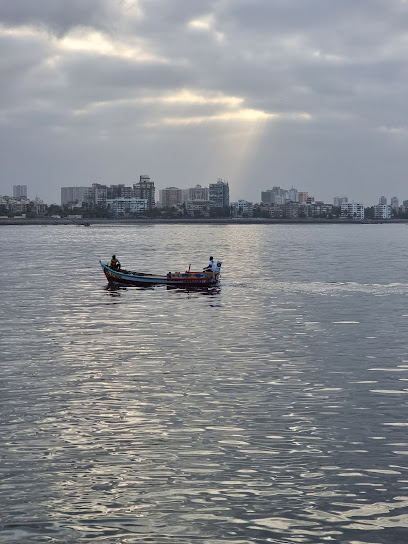
Unmissable attractions to see
Shree Siddhivinayak Temple
Explore the divine beauty of Shree Siddhivinayak Temple, a serene haven in Mumbai dedicated to Lord Ganesha, perfect for spiritual seekers and cultural enthusiasts.
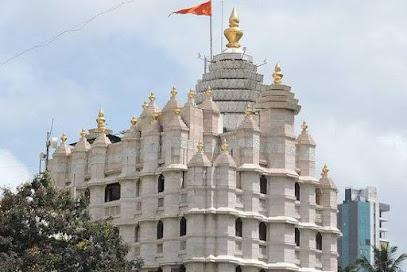
Marine Drive
Experience the breathtaking views and vibrant atmosphere of Marine Drive, Mumbai's iconic coastal promenade known as the 'Queen's Necklace.'
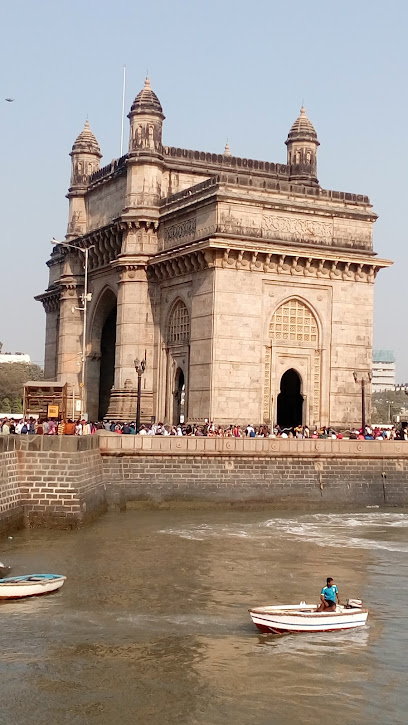
ISKCON Temple, Juhu, Mumbai
Experience divine tranquility at ISKCON Temple, a spiritual haven in Juhu, Mumbai, where devotion meets culture in a splendid architectural setting.
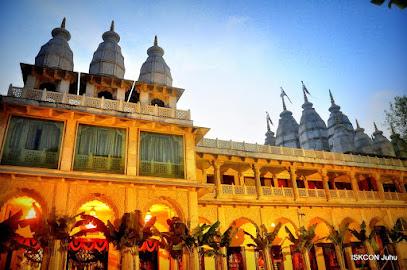
Snow Kingdom (Mumbai)
Experience the magic of winter at Snow Kingdom in Mumbai, an indoor snow park filled with thrilling rides and fun activities for all ages.
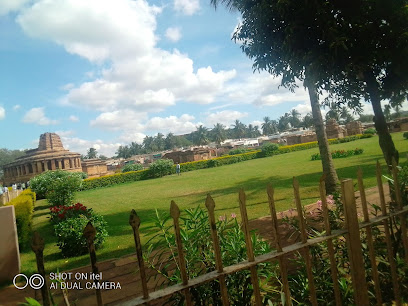
Chhatrapati Shivaji Maharaj Vastu Sangrahalaya
Explore the rich heritage of India at Chhatrapati Shivaji Maharaj Vastu Sangrahalaya, a cultural gem in the heart of Mumbai.

Shri Mahalakshmi Devi Temple, Mumbai
Explore the Shri Mahalakshmi Devi Temple, a spiritual haven in Mumbai, where devotion meets stunning architecture and rich cultural heritage.

Alibaug Beach
Explore the beauty of Alibaug Beach, a serene coastal haven in Maharashtra, perfect for relaxation and adventure.
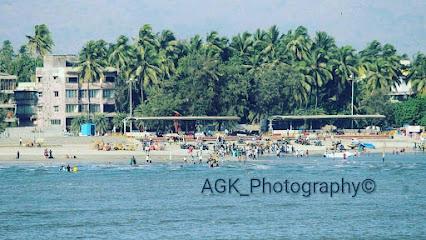
Veermata Jijabai Bhosale Botanical Udyan and Zoo
Discover the beauty and wildlife at Veermata Jijabai Bhosale Botanical Udyan and Zoo, a serene oasis in the heart of Mumbai, perfect for nature enthusiasts.

Hanging Gardens
Explore the enchanting Hanging Gardens of Mumbai, a serene escape adorned with vibrant flora and breathtaking views of the Arabian Sea and skyline.

Flora Fountain
Explore Flora Fountain, a historical landmark in Mumbai that showcases exquisite colonial architecture and vibrant cultural surroundings.
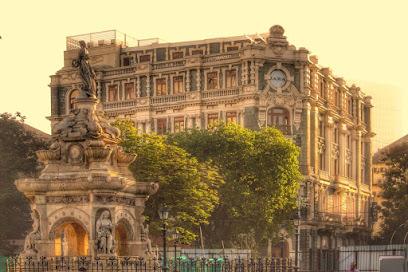
Jogger's Park
Discover the tranquil beauty of Jogger's Park in Bandra, a perfect blend of nature and coastal charm for an unforgettable Mumbai experience.
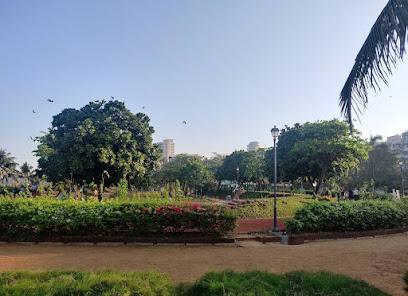
Global Vipassana Pagoda
Experience peace and tranquility at the Global Vipassana Pagoda, a stunning monument and meditation center in Mumbai.
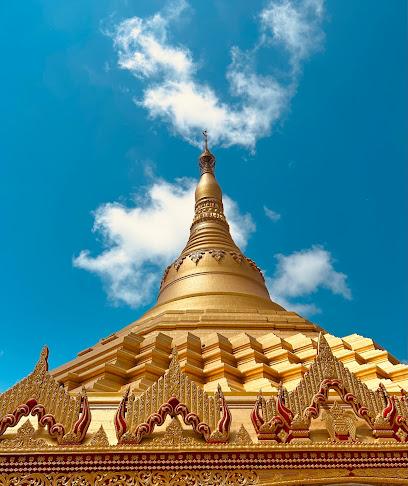
Haji Ali Dargah
Explore the serene beauty and spiritual essence of Haji Ali Dargah, a must-visit shrine in Mumbai that unites faith and stunning architecture.
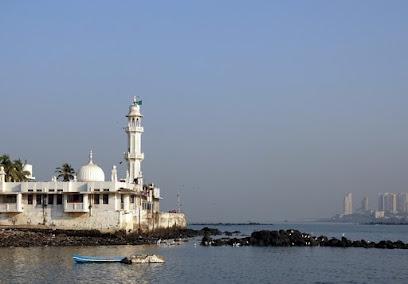
Nehru Science Centre
Explore the Nehru Science Centre in Mumbai, a thrilling destination for science enthusiasts with interactive exhibits and cosmic journeys.
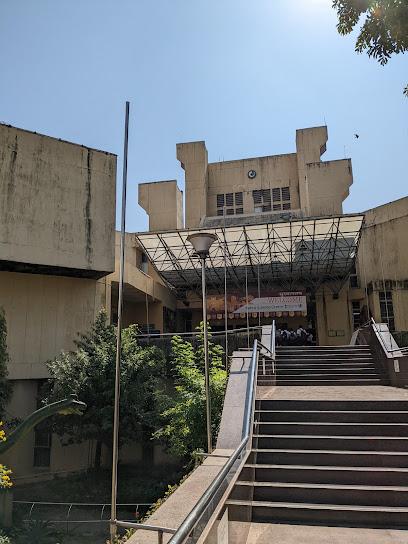
Taraporevala Aquarium
Explore the vibrant marine life and conservation efforts at Taraporevala Aquarium, a must-visit tourist attraction in Mumbai's Marine Drive area.
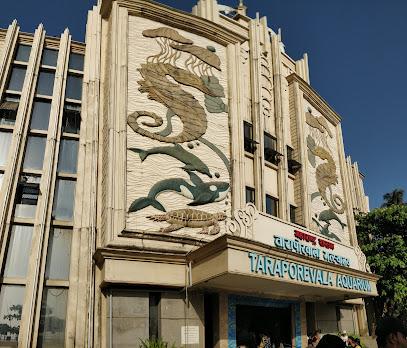
Essential places to dine
Mirchi & Mime
Discover culinary excellence at Mirchi & Mime in Powai - where delicious Indian cuisine meets inclusive service.

The Bombay Canteen
Discover the fusion of tradition and innovation at The Bombay Canteen – where every dish tells a story of India's rich culinary heritage.
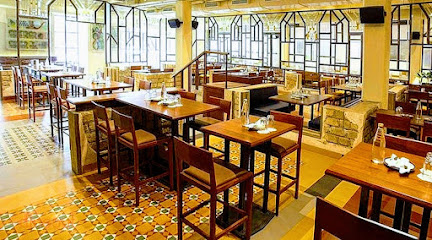
Copper Chimney - North Indian Family Restaurant in Worli
Experience authentic North Indian flavors at Copper Chimney in Worli - a buffet haven for families and food lovers alike.
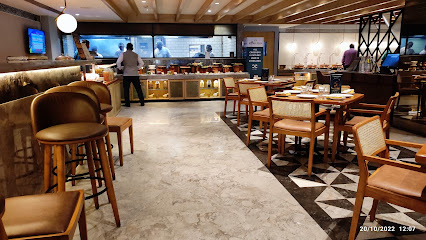
Nawab Saheb
Experience exquisite Awadhi cuisine at Nawab Saheb in Mumbai's Westin Powai Lake – where tradition meets luxury in every bite.
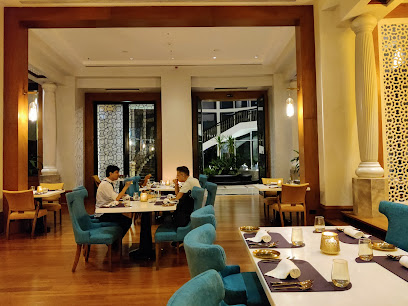
Lake View Cafe
Experience exquisite dining at Lake View Cafe with stunning views of Powai Lake and an eclectic menu featuring American, Indian, Chinese, and Italian cuisines.
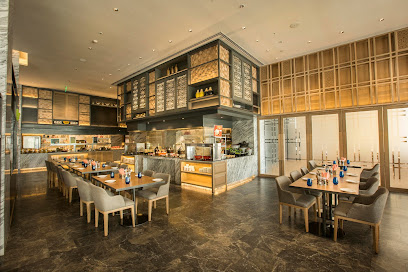
O Pedro - BKC
Discover the rich flavors of Indian and Portuguese cuisine at O Pedro in Mumbai's Bandra Kurla Complex, where every meal is a celebration.

Indian Accent Mumbai
Experience the fusion of tradition and innovation at Indian Accent Mumbai – where every dish tells a story.
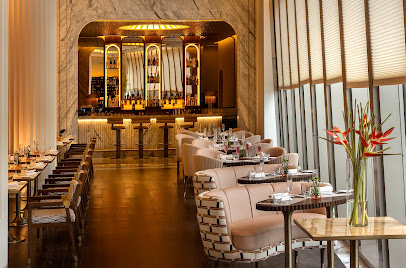
Masala Library by Jiggs Kalra
Experience the essence of Indian cuisine at Masala Library - where tradition meets innovation in a fine dining setting.
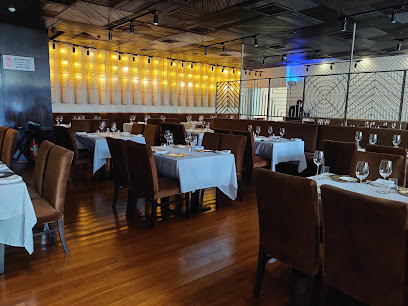
Banjara Mumbai
Experience exquisite dining at Banjara Mumbai – where Indian flavors meet global cuisine in an elegant buffet setting.
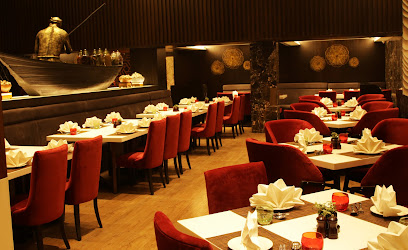
Gallops Restaurant
Discover exquisite cuisine amidst scenic views at Gallops Restaurant in Mumbai's Mahalaxmi Racecourse – a perfect blend of fine dining and nature.
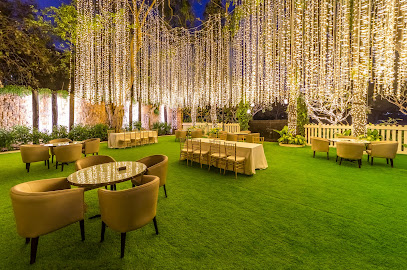
Trèsind Mumbai
Indulge in avant-garde Indian cuisine at Trèsind Mumbai - where tradition meets innovation in every exquisite dish.
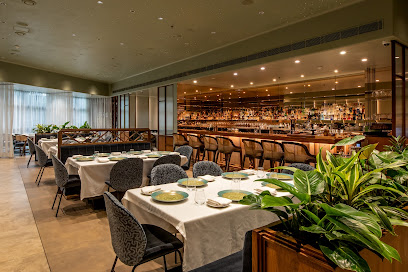
Khyber
Discover exquisite North Indian cuisine at Khyber in Mumbai’s Kala Ghoda; where tradition meets modern fine dining.
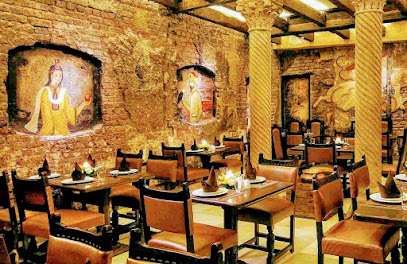
Koyla - Ethnic Cuisine
Experience the rich flavors of Modern Indian cuisine at Koyla in Colaba, Mumbai - where tradition meets innovation.
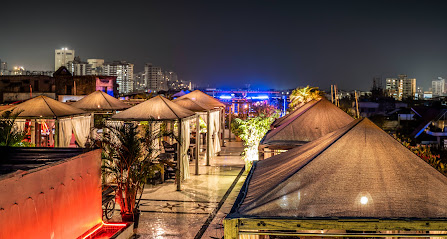
Copper Chimney - Authentic Indian Restaurant In Kalaghoda, Mumbai
Discover authentic Indian flavors at Copper Chimney in Kala Ghoda - where tradition meets exquisite taste.
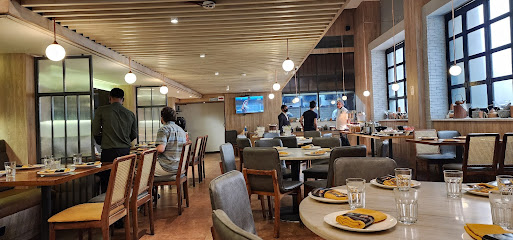
Jamavar - Indian Speciality Restaurant
Experience the finest modern Indian cuisine at Jamavar in Mumbai – where tradition meets innovation in every exquisite dish.
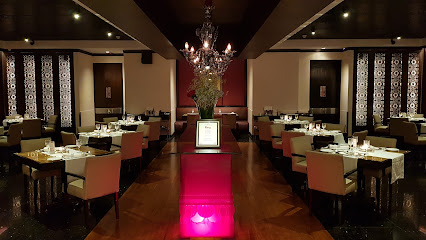
Markets, malls and hidden boutiques
Phoenix Marketcity
Explore the ultimate shopping destination in Mumbai at Phoenix Marketcity, offering a mix of luxury brands, diverse dining options, and thrilling entertainment.
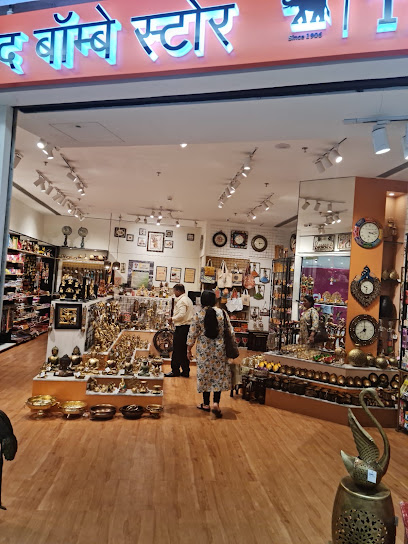
R CITY
Explore the ultimate shopping and dining destination at R CITY in Ghatkopar West, Mumbai, featuring brands, eateries, and entertainment for all ages.
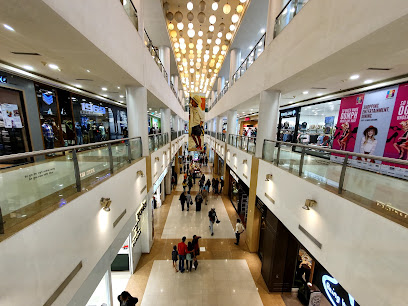
Phoenix Palladium
Discover a shopping haven at Phoenix Palladium in Mumbai, featuring top brands, exquisite dining, and entertainment for an unforgettable experience.
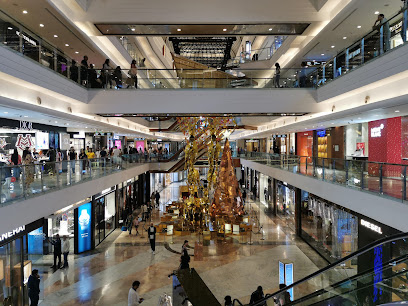
Oberoi Mall
Discover the ultimate shopping and dining experience at Oberoi Mall in Goregaon, Mumbai - where retail therapy meets culinary delights.
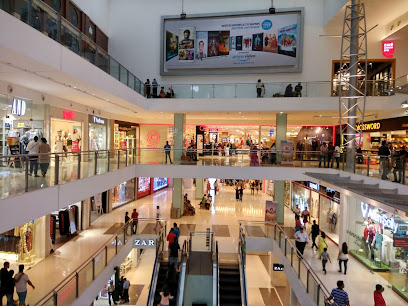
Infiniti Mall
Discover the ultimate shopping and entertainment experience at Infiniti Mall, Andheri West, Mumbai, where retail therapy meets culinary delights.
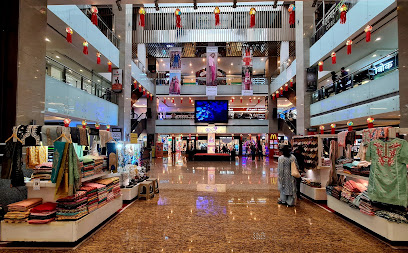
Fashion Street
Discover the vibrant shopping paradise of Fashion Street in Mumbai, where fashion meets culture in a bustling flea market atmosphere.
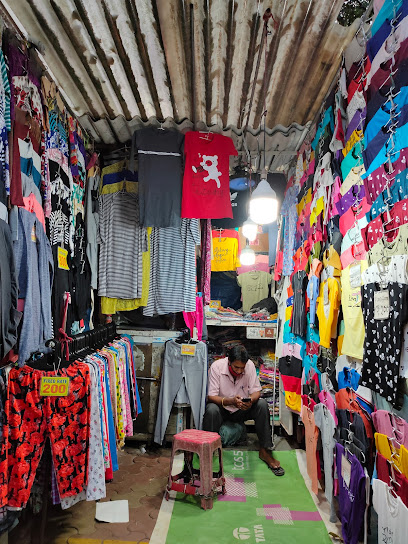
Colaba Market
Explore Colaba Market, a vibrant shopping destination in Mumbai filled with fresh produce, unique crafts, and a lively atmosphere that embodies the city's spirit.
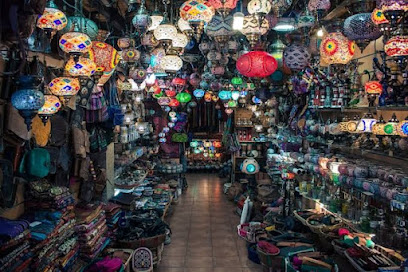
Mangaldas Market
Discover the vibrant colors and rich textiles of Mangaldas Market, Mumbai's iconic shopping destination for authentic Indian clothing and fabrics.
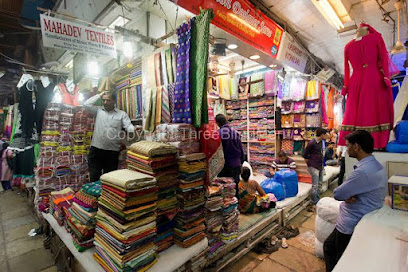
Yuvi shop lasha
Explore Yuvi Shop Lasha in Mumbai's Bandra Market for trendy dresses that blend local styles with modern fashion at unbeatable prices.

Linking Road Market
Experience the vibrant shopping culture of Mumbai at Linking Road Market, where eclectic fashion and delicious street food await.
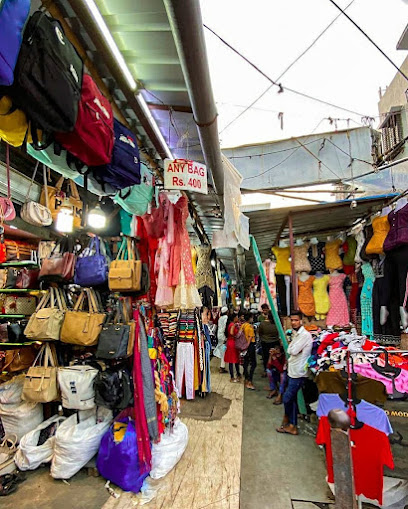
Heera Panna Shopping Centre
Discover a vibrant shopping experience at Heera Panna Shopping Centre in Mumbai, blending retail, dining, and cultural events.
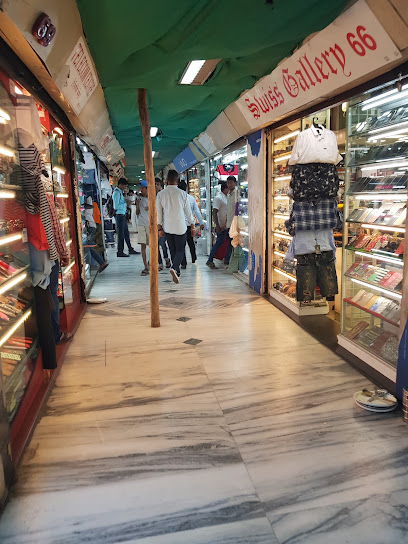
KALKI Flagship Store Santacruz
Explore the elegance of Indian fashion at KALKI Flagship Store in Santacruz, Mumbai, offering exquisite bridal and ethnic wear for every occasion.
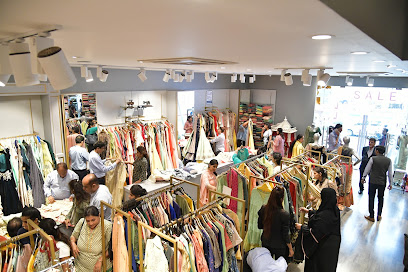
Cheap Jack 1st Floor
Explore Cheap Jack in Bandra for unique gifts, party supplies, and charming household items at affordable prices.
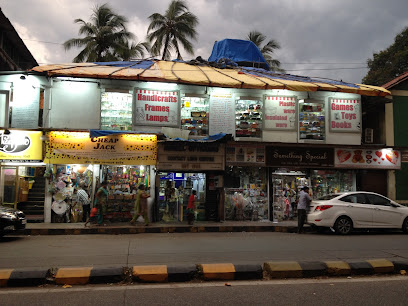
Charagh Din
Experience the best of men's fashion at Charagh Din in Colaba, Mumbai – a blend of tradition and contemporary style.
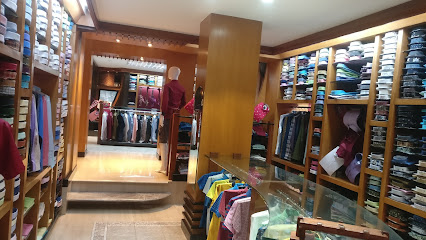
The Bombay Store - P.M. Road, Fort, Mumbai
Explore The Bombay Store, your gateway to authentic Indian gifts, handicrafts, and home decor in the heart of Mumbai.
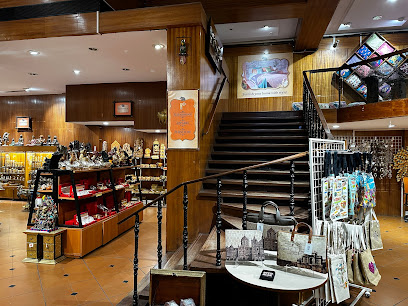
Essential bars & hidden hideouts
Bombay Cocktail Bar
Experience Mumbai's nightlife at Bombay Cocktail Bar, where creative cocktails meet delicious cuisine in a vibrant lounge atmosphere.
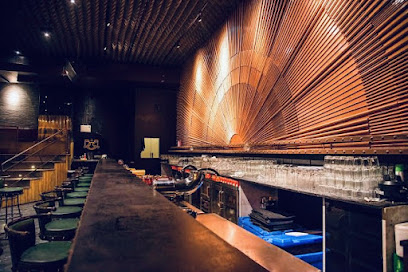
Lord of the Drinks Worli
Experience the vibrant nightlife and exquisite cuisine at Lord of the Drinks Worli, Mumbai's premier lounge destination.
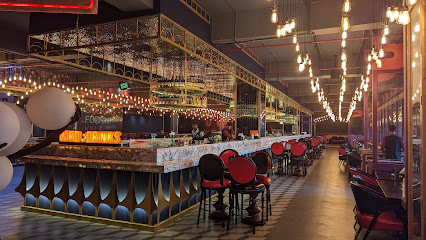
Agent Jack's Bar - Malad West
Discover Agent Jack's Bar in Malad West, Mumbai - a vibrant bar and lounge offering delicious food, crafted cocktails, and an energetic atmosphere.
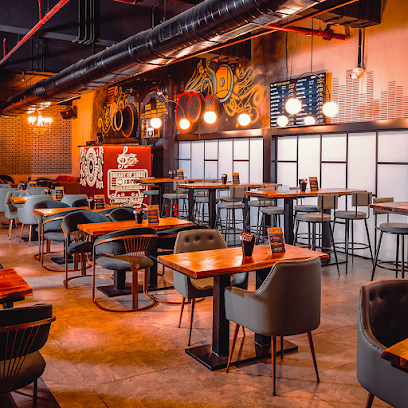
Escobar
Discover Escobar, Mumbai's upscale lounge where exquisite cocktails and vibrant nightlife create unforgettable memories.
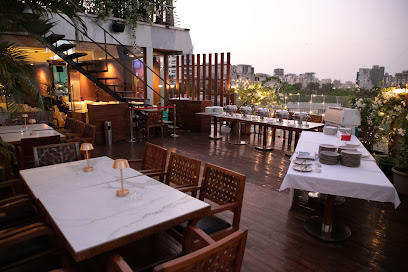
The Irish House, Lower Parel
Experience the charm of an authentic Irish pub in the heart of Mumbai, offering delectable food, vibrant ambiance, and an extensive drink selection.
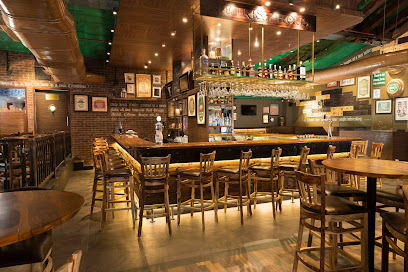
Rikē - Terrace Bar & Grill
Discover the vibrant atmosphere and exquisite flavors at Rikē - Terrace Bar & Grill in Andheri, Mumbai, where culinary delights meet breathtaking views.
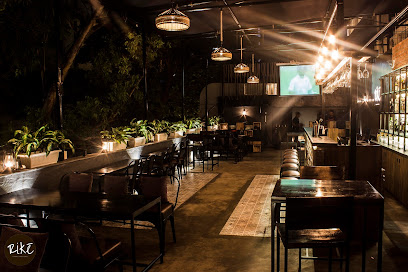
AER
Experience the ultimate luxury at AER, Mumbai's premier rooftop lounge, offering spectacular views, signature cocktails, and an unforgettable atmosphere.
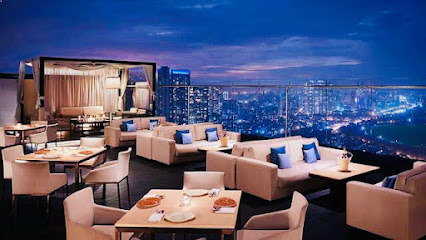
DOOR NO. 1
Discover the energetic nightlife at Door No. 1 in Bandra, where fusion cuisine meets innovative cocktails and electrifying DJ beats.

The Irish House, Bandra, Mumbai
Experience the vibrant Irish pub culture in Bandra, Mumbai, with delicious food, refreshing drinks, and lively entertainment.
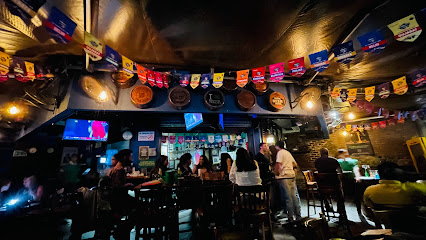
Monkey Bar
Discover the lively Monkey Bar in Bandra West—a vibrant bar and restaurant offering innovative cocktails and delicious cuisine in the heart of Mumbai.
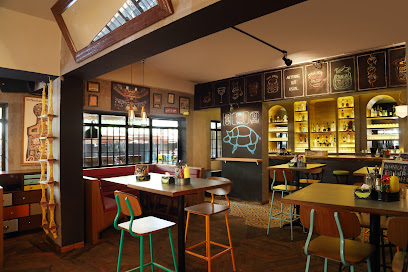
Toto's Garage
Discover the vibrant nightlife at Toto's Garage in Bandra West, Mumbai, where eclectic decor meets delicious bites and an extensive drink menu.
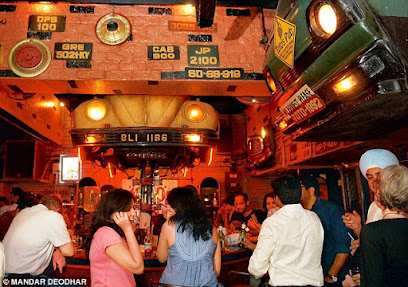
Radio Bar
Discover the lively charm of Radio Bar in Mumbai, where exquisite cocktails and vibrant atmosphere meet culinary delights.
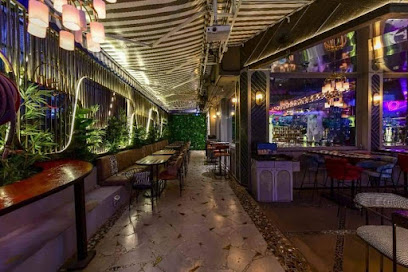
Craftbar
Discover the vibrant flavors of North Indian and Chinese cuisine at Craftbar in Bandra East, Mumbai - a culinary hotspot for food enthusiasts.
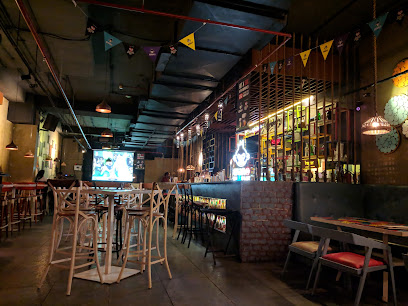
THE GHETTO
Experience the vibrant nightlife of Mumbai at The Ghetto, a lively bar in Breach Candy with eclectic drinks and an inviting atmosphere.
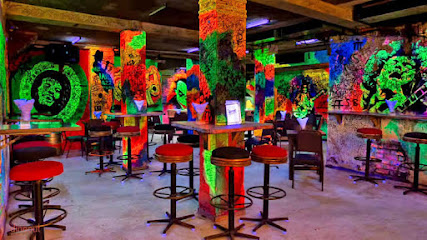
Bar Bar
Discover the vibrant nightlife of Mumbai at Bar Bar, a sophisticated lounge and bar in Phoenix Market City Mall, perfect for unwinding and socializing.
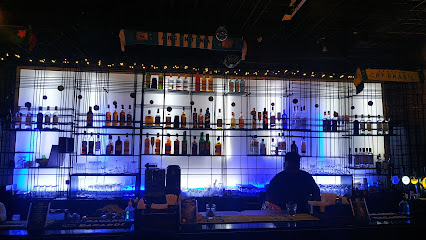
Local Phrases
-
- Helloनमस्ते
[Namaste] - Goodbyeअलविदा
[Alvida] - Yesहाँ
[Haan] - Noनहीं
[Nahi] - Please/You're welcomeकृपया
[Kripaya] - Thank youधन्यवाद
[Dhanyavaad] - Excuse me/Sorryमाफ़ कीजिए
[Maaf kijiye] - How are you?आप कैसे हैं?
[Aap kaise hain?] - Fine. And you?ठीक हूँ। आप सुनाइये।
[Theek hoon. Aap sunaiye.] - Do you speak English?क्या आप अंग्रेज़ी बोलते हैं?
[Kya aap angrezi bolte hain?] - I don't understandमुझे समझ में नहीं आया
[Mujhe samajh mein nahi aaya]
- Helloनमस्ते
-
- I'd like to see the menu, pleaseकृपया मेन्यू दिखाइये
[Kripaya menu dikhaiye] - I don't eat meatमैं मांस नहीं खाता/खाती
[Main maans nahi khata/khati] - Cheers!चियर्स!
[Cheers!] - I would like to pay, pleaseकृपया मैं भुगतान करना चाहुँ
[Kripaya main bhugtan karna chahoon]
- I'd like to see the menu, pleaseकृपया मेन्यू दिखाइये
-
- Help!मदद!
[Madad!] - Go away!चले जाओ!
[Chale jao!] - Call the Police!पुलिस को बुलाओ!
[Police ko bulao!] - Call a doctor!डॉक्टर को बुलाओ!
[Doctor ko bulao!] - I'm lostमैं खो गया/गई हूँ
[Main kho gaya/gayi hoon] - I'm illमुझे बीमारी है
[Mujhe bimari hai]
- Help!मदद!
-
- I'd like to buy...मैं खरीदना चाहता/चाहती हूँ...
[Main khareedna chahta/chahti hoon...] - I'm just lookingमैं सिर्फ देख रहा/रही हूँ
[Main sirf dekh raha/rahi hoon] - How much is it?यह कितने का है?
[Yeh kitne ka hai?] - That's too expensiveयह बहुत महंगा है
[Yeh bahut mehnga hai] - Can you lower the price?क्या आप कीमत कम कर सकते हैं?
[Kya aap keemat kam kar sakte hain?]
- I'd like to buy...मैं खरीदना चाहता/चाहती हूँ...
-
- What time is it?अभी कितने बजे है?
[Abhi kitne baje hai?] - It's one o'clockएक बजे है
[Ek baje hai] - Half past (10)(१० बजे) के बाद ढाई बजे है
[(10 baje) ke baad dhaai baje hai] - Morningसुबह
[Subah] - Afternoonदोपहर
[Dopahar] - Eveningशाम
[Shaam] - Yesterdayकल
[Kal] - Todayआज
[Aaj] - Tomorrowकल
[Kal] - 1एक
[Ek] - 2दो
[Do] - 3तीन
[Teen] - 4चार
[Char] - 5पाँच
[Paanch] - 6छह
[Chhah] - 7सात
[Saath] - 8आठ
[Aath] - 9नौ
[Nau] - 10दस
[Das]
- What time is it?अभी कितने बजे है?
-
- Where's a/the...?...कहाँ है?
[...kahan hai?] - What's the address?पता क्या है?
[Pata kya hai?] - Can you show me (on the map)?(नक्शे पे) दिखा सकते हैं?
[(Nakshe pe) dikha sakte hain?] - When's the next (bus)?अगली (बस) कब है?
[Agli (bus) kab hai?] - A ticket (to ....)एक टिकट (.... के लिए)
[Ek ticket (...ke liye)]
- Where's a/the...?...कहाँ है?
History of Mumbai
-
Mumbai, originally a conglomeration of seven islands, was known as 'Bombay' for much of its history. The name 'Bombay' is believed to derive from the Portuguese name 'Bombaim', meaning 'Good Bay'. The islands were under the control of various indigenous fishing communities before falling into the hands of the Portuguese in the 16th century.
-
In 1661, the Portuguese ceded Bombay to the British as part of the dowry for Catherine of Braganza's marriage to Charles II of England. Seven years later, the British Crown leased the islands to the East India Company. Under British rule, Bombay was transformed from a group of fishing villages into a major port and trading hub.
-
Constructed to commemorate the visit of King George V and Queen Mary to India in 1911, the Gateway of India is one of Mumbai's most iconic landmarks. Completed in 1924, this monumental archway became a symbolic ceremonial entrance to India for British Viceroys and governors.
-
During British rule, Bombay became the capital of the Bombay Presidency, a large administrative subdivision. The city grew rapidly, attracting migrants from across the Indian subcontinent. It emerged as a center for education, culture, and trade.
-
Mumbai played a pivotal role in the Indian independence movement. The city was the birthplace of several key figures, including Bal Gangadhar Tilak and Dr. B.R. Ambedkar. In 1942, the Quit India Movement, demanding an end to British rule, was launched from Mumbai's Gowalia Tank Maidan.
-
After India gained independence in 1947, Bombay continued to grow as an economic powerhouse. In 1960, the city became the capital of the newly created state of Maharashtra. The name was officially changed from Bombay to Mumbai in 1995, in honor of the local deity Mumbadevi.
-
Mumbai is the heart of India's film industry, known globally as Bollywood. The city has been a major center for film production since the early 20th century. Today, it produces more films than any other city in the world, drawing actors, directors, and technicians from across the globe.
-
Mumbai is India's financial and commercial capital. It houses the Bombay Stock Exchange, Reserve Bank of India, and numerous multinational corporations. The city is also a melting pot of cultures, hosting a diverse population and a rich tapestry of languages, cuisines, and traditions.
-
On November 26, 2008, Mumbai was the target of a series of terrorist attacks that lasted four days. Key locations such as the Taj Mahal Palace Hotel, Oberoi Trident, and CST Railway Station were attacked, resulting in significant loss of life and destruction. The attacks shocked the world and highlighted the issue of global terrorism.
Mumbai Essentials
-
Mumbai, India's financial capital, is well-connected by air, rail, and road. The Chhatrapati Shivaji Maharaj International Airport is the primary gateway for international and domestic travelers. Major airlines operate regular flights to and from Mumbai. For rail travel, the Chhatrapati Shivaji Maharaj Terminus (CST) and Mumbai Central are the main railway stations. The city is also accessible by long-distance buses and private car services.
-
Mumbai has an extensive public transportation network that includes local trains, buses, auto-rickshaws, and taxis. The Mumbai Suburban Railway is the backbone of the city's transport system, while the Brihanmumbai Electric Supply and Transport (BEST) buses cover most areas. Auto-rickshaws and taxis are convenient for short distances. The Mumbai Metro and Monorail further enhance connectivity. Ride-sharing services like Uber and Ola are also widely available.
-
The official currency in Mumbai is the Indian Rupee (INR). Credit and debit cards are widely accepted in hotels, restaurants, and shops. ATMs are plentiful throughout the city, allowing easy access to cash. It is advisable to carry some cash for smaller establishments and street vendors. Currency exchange services are available at the airport, banks, and authorized currency exchange centers.
-
Mumbai is generally safe for tourists, but it's important to stay vigilant. Avoid isolated areas, especially at night, and be cautious in crowded places to prevent pickpocketing. Areas like Dharavi, Kurla, and parts of Andheri have higher crime rates and should be approached with caution. Always use registered taxis or ride-sharing services and avoid sharing personal information with strangers.
-
In case of emergency, dial 100 for police, 101 for fire, and 102 for ambulance services. Major hospitals like Bombay Hospital, Lilavati Hospital, and Hinduja Hospital provide high-quality medical care. Pharmacies are located throughout the city for minor health issues. It is advisable to have travel insurance that covers medical emergencies. Keep a list of emergency contacts and important local numbers handy.
-
Fashion: Do dress modestly, especially when visiting religious sites. Avoid wearing revealing clothing. Religion: Do respect local customs and traditions. Remove your shoes before entering temples and cover your head if required. Public Transport: Do be respectful and give up your seat to elderly passengers. Don't eat or drink on public transport. Greetings: Do greet people with a handshake or a traditional 'Namaste' with folded hands. Eating & Drinking: Do try local delicacies and accept food offerings graciously. Don't refuse hospitality, as it is considered impolite.
-
To experience Mumbai like a local, visit the bustling markets such as Crawford Market and Colaba Causeway for unique shopping experiences. Try street food at places like Juhu Beach and Mohammed Ali Road. Engage with locals; Mumbaikars are known for their friendliness and willingness to help. Explore lesser-known neighborhoods like Bandra for its street art and cultural vibe. Take a local train ride to get a sense of daily life in Mumbai.
Trending Landmark in Mumbai
-
Gateway Of India Mumbai
-
Chhatrapati Shivaji Maharaj Terminus
-
Band Stand
-
Chhatrapati Shivaji Maharaj Vastu Sangrahalaya
-
The Taj Mahal Palace, Mumbai
-
Elephanta Caves
-
Bandra Fort
-
Flora Fountain
-
Haji Ali Dargah
-
Chhatrapati Shivaji Maharaj Statue
-
Kanheri Caves
-
Worli Fort
-
Shiv Fort
-
Jogeshwari Caves
-
Madh Fort
Nearby Cities to Mumbai
-
Things To Do in Pune
-
Things To Do in Nashik
-
Things To Do in Aurangabad
-
Things To Do in Vadodara
-
Things To Do in Panaji
-
Things To Do in Rajkot
-
Things To Do in Ahmedabad
-
Things To Do in Goa
-
Things To Do in Udaipur
-
Things To Do in Bhopal
-
Things To Do in Nagpur
-
Things To Do in Jodhpur
-
Things To Do in Pushkar
-
Things To Do in Hyderabad
-
Things To Do in Bengaluru


















